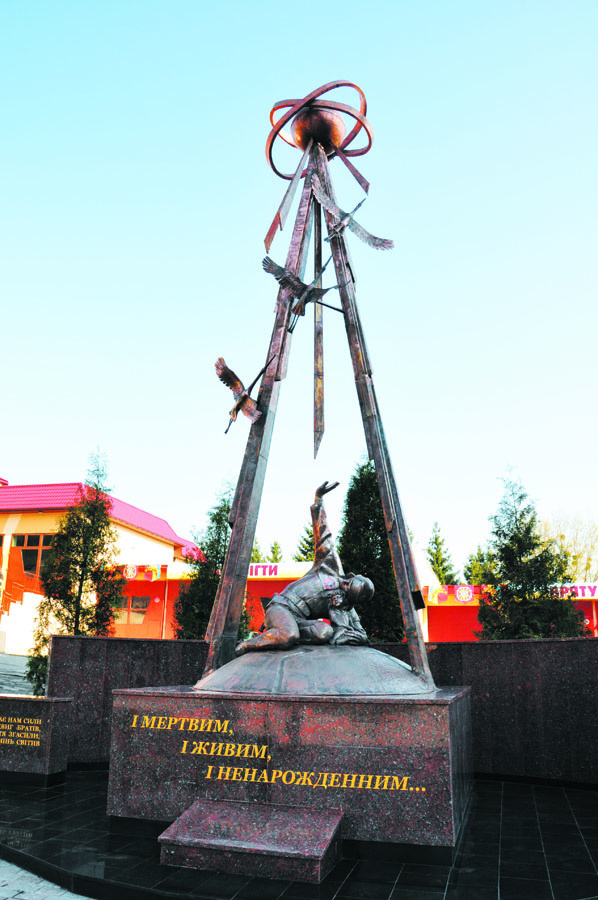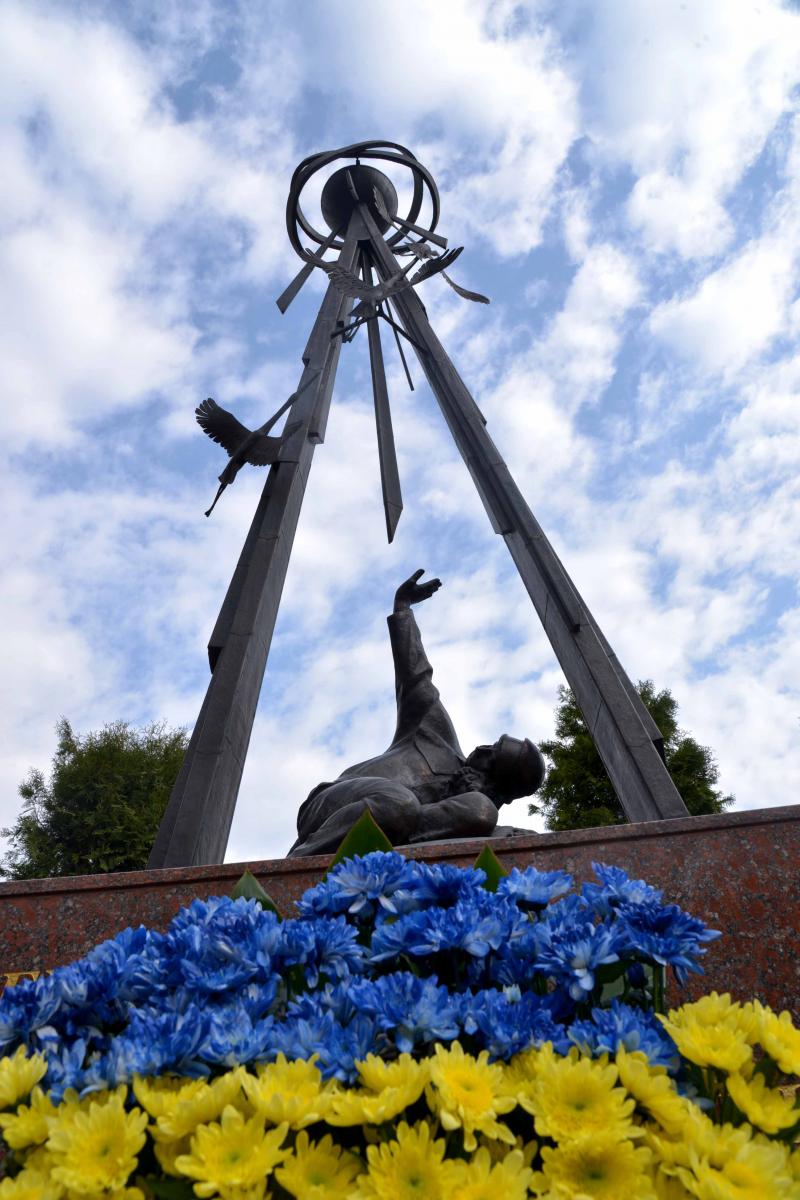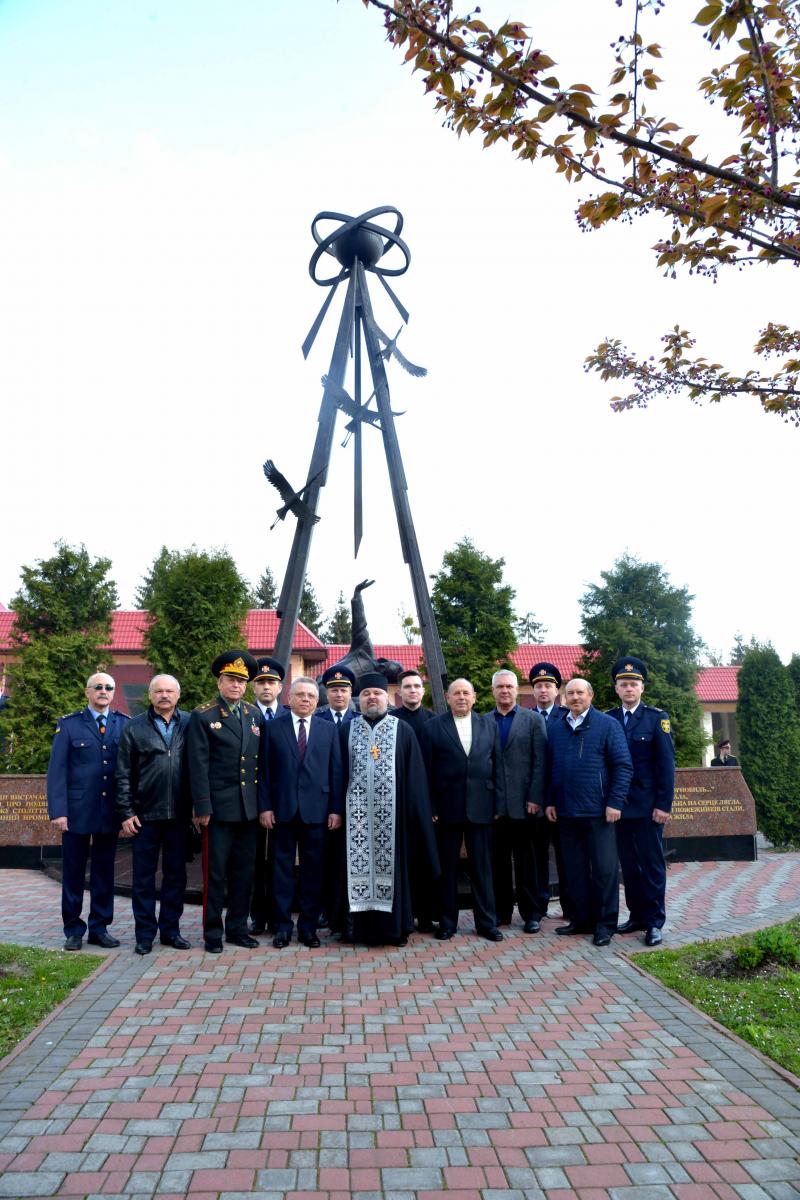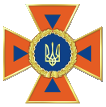Chornobyl
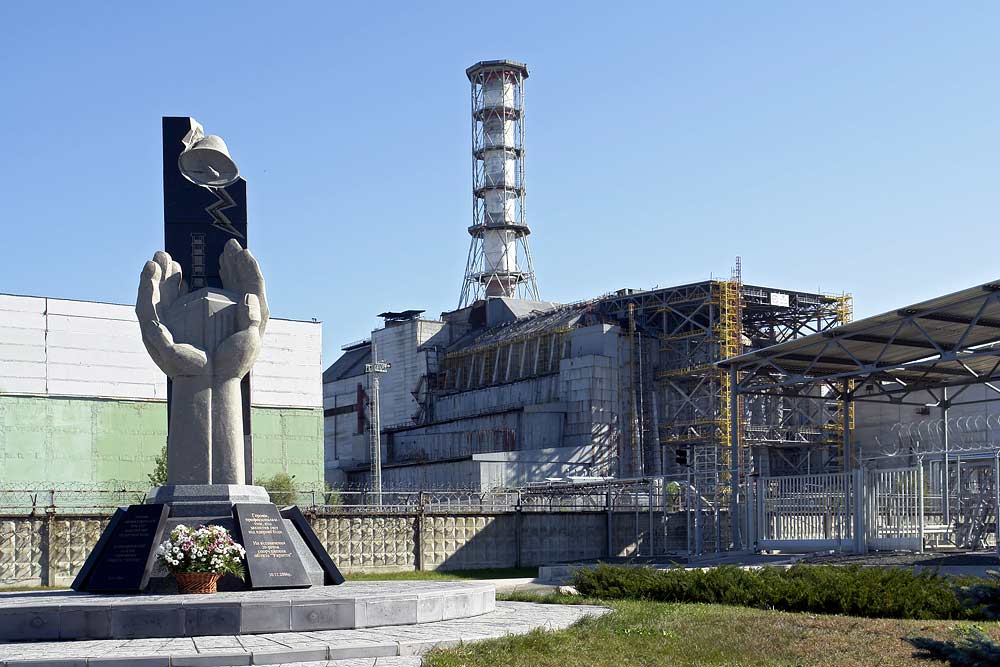 Chornobyl is a hellish and sad place. It is our pain, tragedy and also courage and sacrifice of people who entered the struggle against an atomic element, trying to stop its destructive impact. Each year, in the last week of April, memory brings us back to 1986. Pictures and films show us a sad hulk of the building with a tall striped tube. This is the Zone, the living hell. In the spring of 1986 thousand people raised against the atomic beast. Fire-fighters were in the first flight. On May 1, 1986, the day for the personnel of Lviv Fire-Technic School started with the "Alarm!" signal. Colonel A.S. Kosivchenko, the Head of School, gathered all the officers in the conference hall and informed: "A terrible disaster hapenned. On April 26 at 1.23 am. the 4th reactor of the Chornobyl nuclear power plant exploded. Local firemen were the first who stood in combating against nuclear disaster. But complicated circumstances require new workers at the nuclear power plant. Our school received an order: the personnel must complete the difficult and responsible task to liquidate the Chornobyl accident." However, that order has not entered into force. According to the order of the Ministry of Internal Affairs of the USSR, Ivan Bilenko and Arthur Lebid' were sent to Chornobyl. There they served from 3 to 25 June 1986. Arthur Lebid' also took part in extinguishing of a fire in the 30-kilometer zone of Chornobyl 5 months passed. The walls of the concrete sarcophagus were taken up higher and higher. A matter of days remained to the total covering of the emergency unit. But there was one more necessary task to perform. Volunteering cadets and officers from Lviv and Kharkiv Fire-Technical Schools had to complete it. The ten brave from LFTS were Olexander Dremlyuga from Vinnytsya Yuriy Kolachuk from Ivano-Frankivsk, Mykola Prudyus and Ivan Błaszko from Moldova, Sergiy Klymchuk from Khmelnytskyi, Vasyl Ilyuk and Oleksander Sventytskyi from Belarus, Victor Avramenko from Chernihiv and Yuriy Saulyak from Odesa.
Chornobyl is a hellish and sad place. It is our pain, tragedy and also courage and sacrifice of people who entered the struggle against an atomic element, trying to stop its destructive impact. Each year, in the last week of April, memory brings us back to 1986. Pictures and films show us a sad hulk of the building with a tall striped tube. This is the Zone, the living hell. In the spring of 1986 thousand people raised against the atomic beast. Fire-fighters were in the first flight. On May 1, 1986, the day for the personnel of Lviv Fire-Technic School started with the "Alarm!" signal. Colonel A.S. Kosivchenko, the Head of School, gathered all the officers in the conference hall and informed: "A terrible disaster hapenned. On April 26 at 1.23 am. the 4th reactor of the Chornobyl nuclear power plant exploded. Local firemen were the first who stood in combating against nuclear disaster. But complicated circumstances require new workers at the nuclear power plant. Our school received an order: the personnel must complete the difficult and responsible task to liquidate the Chornobyl accident." However, that order has not entered into force. According to the order of the Ministry of Internal Affairs of the USSR, Ivan Bilenko and Arthur Lebid' were sent to Chornobyl. There they served from 3 to 25 June 1986. Arthur Lebid' also took part in extinguishing of a fire in the 30-kilometer zone of Chornobyl 5 months passed. The walls of the concrete sarcophagus were taken up higher and higher. A matter of days remained to the total covering of the emergency unit. But there was one more necessary task to perform. Volunteering cadets and officers from Lviv and Kharkiv Fire-Technical Schools had to complete it. The ten brave from LFTS were Olexander Dremlyuga from Vinnytsya Yuriy Kolachuk from Ivano-Frankivsk, Mykola Prudyus and Ivan Błaszko from Moldova, Sergiy Klymchuk from Khmelnytskyi, Vasyl Ilyuk and Oleksander Sventytskyi from Belarus, Victor Avramenko from Chernihiv and Yuriy Saulyak from Odesa. 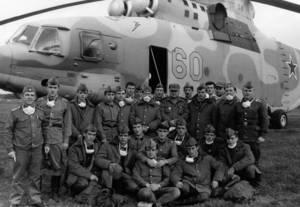 They were led by the teacher of Fire Tactics Cycle Major Mykhailo Sudnitsyn. Until the arrival, nobody knew anything about the complexity of the task awaiting them. After a flight from Lviv to Boryspil our cadets went directly to Chornobyl on a helicopter. There they met volunteers from Kharkiv Fire-Technical School led by Lieutenant Valery Kosogov. Only in the storage bunker under the NPP, cadets were informed about their main task. After the explosion, radioactive debris soared into the air and fell on the roof of the adjacent units. The roofs were cleaned by the robot, but it was impossible to clean technological platforms of 150-meter ventilation pipe. After theoretical training on the job, cadets tried on protective clothing. Victor Sorokin from Kharkiv went determined the level of radiation on technological platforms. His road to the top point lasted 22 minutes. This time was very important, not only for the work. It also allowed saving health and lives of all participants of the operation. The next day, cadets and officers performed one of the most difficult operations at Chernobyl. The guys worked in pairs, one after another, during short time intervals. It was extremely difficult to climb to the heights, because they were dressed in special protective suits. Heavy pieces of graphite rods were dumped with shovels to the mouth of the destroyed reactor. It was extremely exhausting and risky work. The radiation monitoring devices showed radiation levels that exceed the maximum for human life.
They were led by the teacher of Fire Tactics Cycle Major Mykhailo Sudnitsyn. Until the arrival, nobody knew anything about the complexity of the task awaiting them. After a flight from Lviv to Boryspil our cadets went directly to Chornobyl on a helicopter. There they met volunteers from Kharkiv Fire-Technical School led by Lieutenant Valery Kosogov. Only in the storage bunker under the NPP, cadets were informed about their main task. After the explosion, radioactive debris soared into the air and fell on the roof of the adjacent units. The roofs were cleaned by the robot, but it was impossible to clean technological platforms of 150-meter ventilation pipe. After theoretical training on the job, cadets tried on protective clothing. Victor Sorokin from Kharkiv went determined the level of radiation on technological platforms. His road to the top point lasted 22 minutes. This time was very important, not only for the work. It also allowed saving health and lives of all participants of the operation. The next day, cadets and officers performed one of the most difficult operations at Chernobyl. The guys worked in pairs, one after another, during short time intervals. It was extremely difficult to climb to the heights, because they were dressed in special protective suits. Heavy pieces of graphite rods were dumped with shovels to the mouth of the destroyed reactor. It was extremely exhausting and risky work. The radiation monitoring devices showed radiation levels that exceed the maximum for human life.
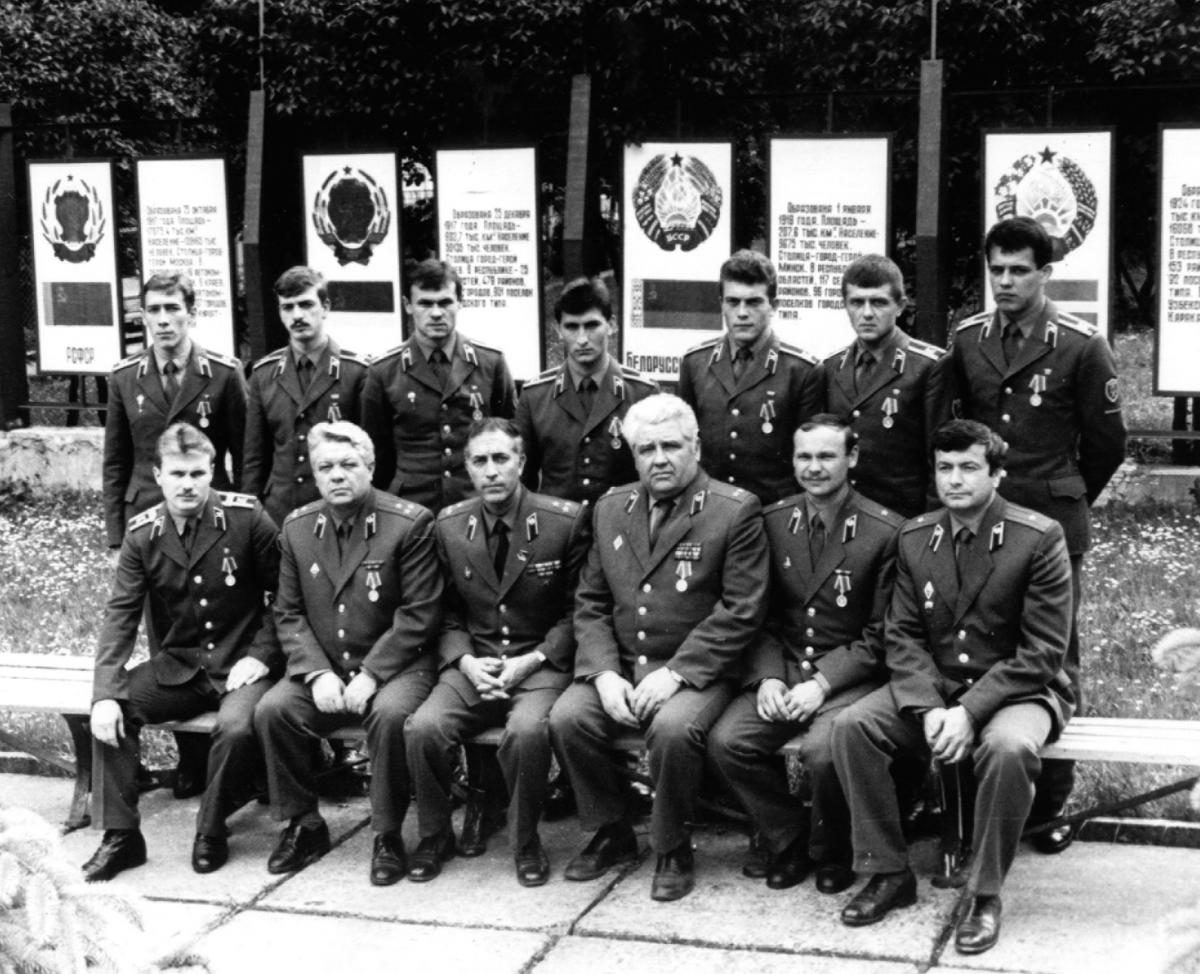
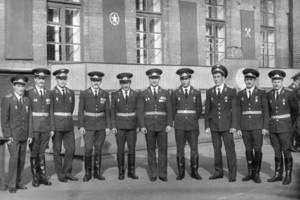
 Among the many thousands of liquidators of the Chernobyl accident there are current and formal employees of the University: Vyacheslav Koshelenko, Anatoliy Antonyuk, Olexandr Gavrylko, Igor Ivaneyko, Vyacheslav Kysil, Arthur Lebid', Mykhaylo Sudnitsyn, Andriy Kharchuk, Orest Yurents, Ivan Bilenko (late) and Bogdan Grytsay (late). All these people made it possible to tame the nuclear disaster at Chernobyl. Every year, on April 26 and December 14, we render honors to the liquidators of the Chernobyl accident at theVirgin of Mercy Church, located on the territory of Lviv State University of Life Safety. Memorial church service brings together cadets, students, scientific and pedagogical staff and all the staff of the institution in common prayer for the dead and living heroes of Chernobyl. Series of events marked to the Chernobyl tragedy take place in the university: meetings with veterans and liquidators of the Chernobyl accident; round tables and seminars on overcoming the consequences of the disaster; artistic literary and musical compositions; documentary films demonstrations, thematic wallpaper issues etc.
Among the many thousands of liquidators of the Chernobyl accident there are current and formal employees of the University: Vyacheslav Koshelenko, Anatoliy Antonyuk, Olexandr Gavrylko, Igor Ivaneyko, Vyacheslav Kysil, Arthur Lebid', Mykhaylo Sudnitsyn, Andriy Kharchuk, Orest Yurents, Ivan Bilenko (late) and Bogdan Grytsay (late). All these people made it possible to tame the nuclear disaster at Chernobyl. Every year, on April 26 and December 14, we render honors to the liquidators of the Chernobyl accident at theVirgin of Mercy Church, located on the territory of Lviv State University of Life Safety. Memorial church service brings together cadets, students, scientific and pedagogical staff and all the staff of the institution in common prayer for the dead and living heroes of Chernobyl. Series of events marked to the Chernobyl tragedy take place in the university: meetings with veterans and liquidators of the Chernobyl accident; round tables and seminars on overcoming the consequences of the disaster; artistic literary and musical compositions; documentary films demonstrations, thematic wallpaper issues etc.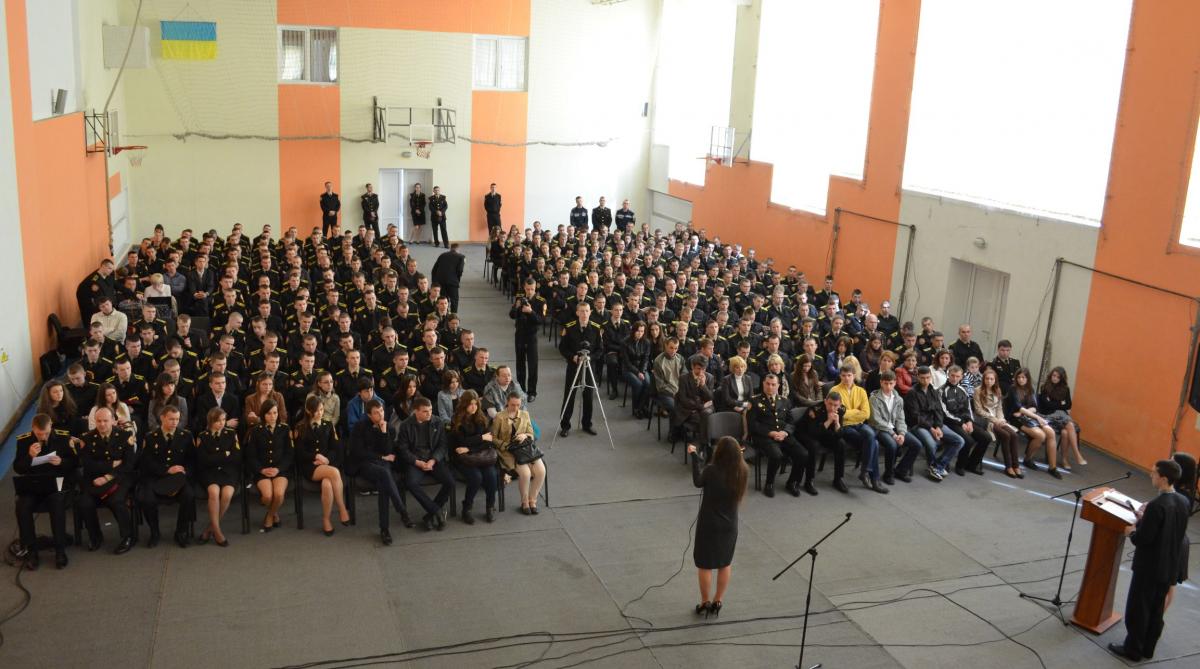
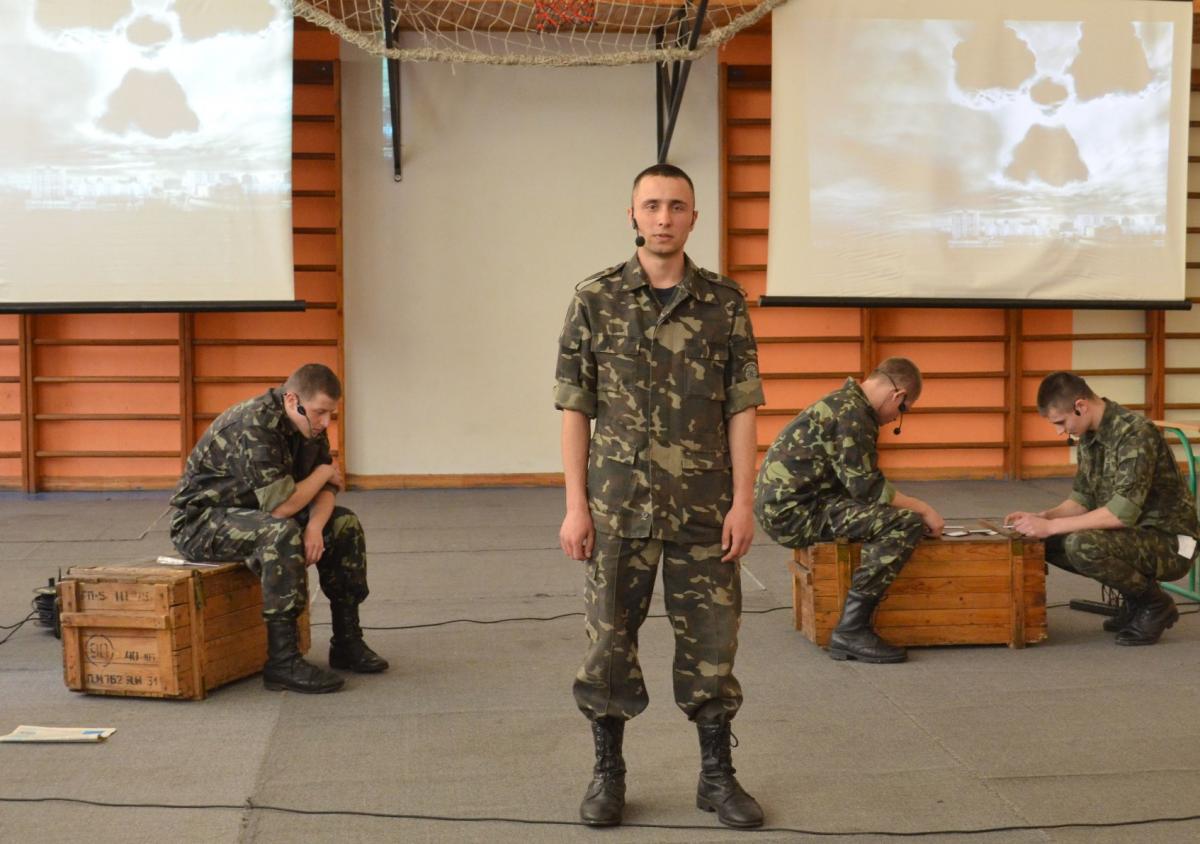
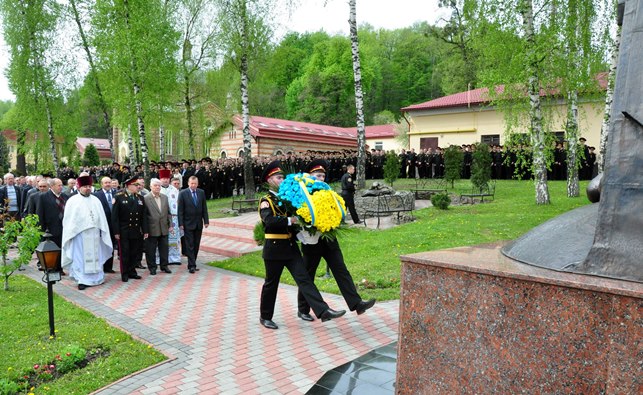
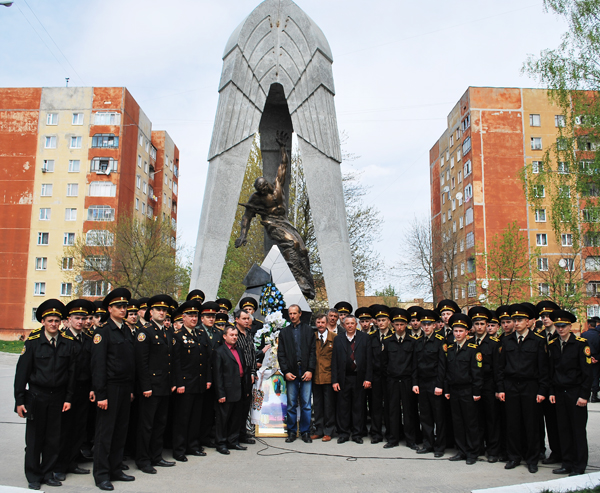
Cadets, students and veterans of the University also lay the flowers to the Monument to "Heroes and Victims of Chernobyl", which was built in Lviv in 2008. Today, a lot of cadets and students whose parents took part in liquidation of the Chernobyl disaster study in our University. Future rescuers choose one of the noblest professions - to protect human life and health, to protect wealth and natural resources from fires, disasters or emergencies. On April 26, 2011, The Monument To Dead, Alive and Unborn was opened at the territory of the University. This event was attended by all the personnel, veterans and former cadets of the institution, that eliminated the consequences of the Chernobyl accident in 1986. Every year we hear the bell and the memory brings us back to 1986... We remember everyone. They performed their professional duty without hesitation. It is important not to forget these people, still alive and already dead, because they took the most severe blow of the nuclear disaster, which yielded to their courage.
